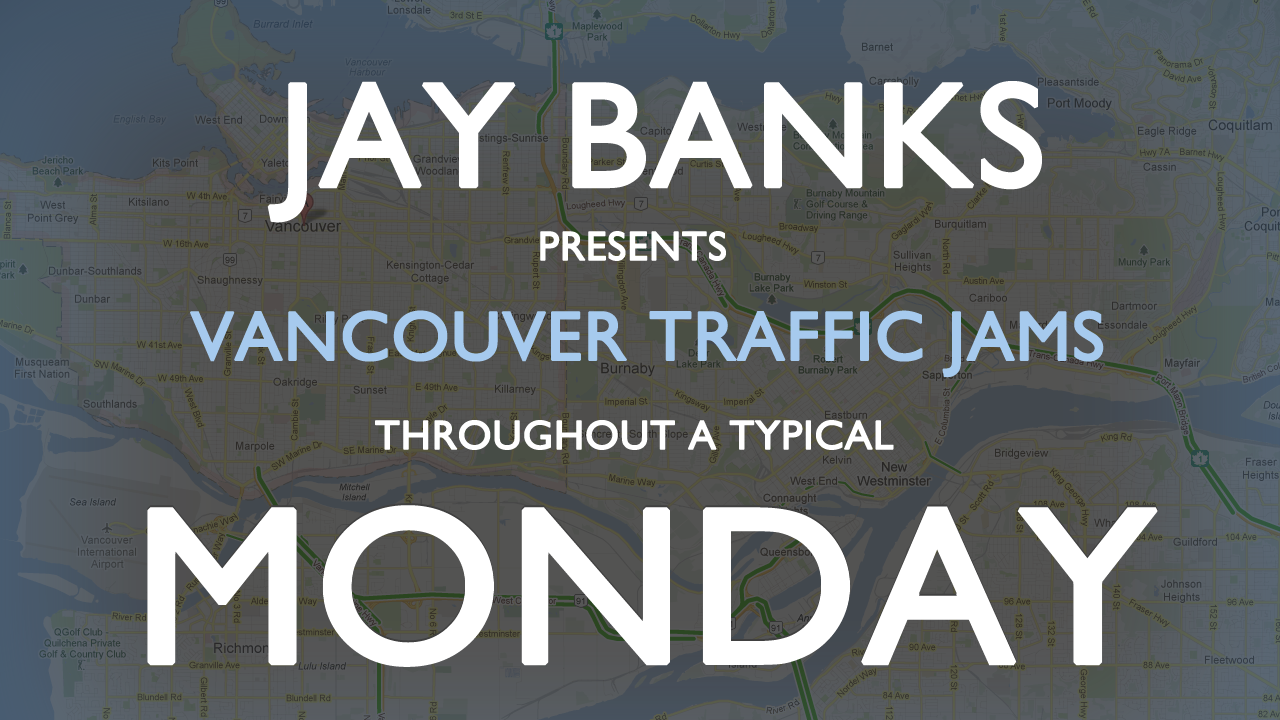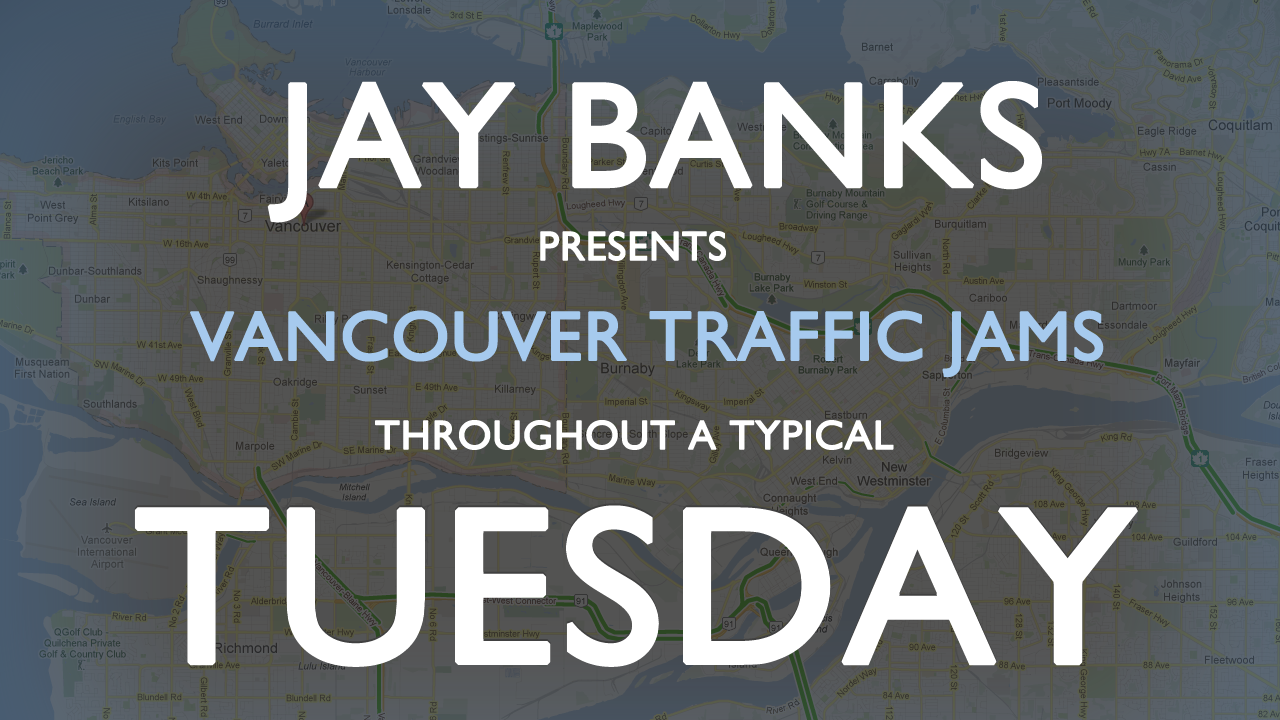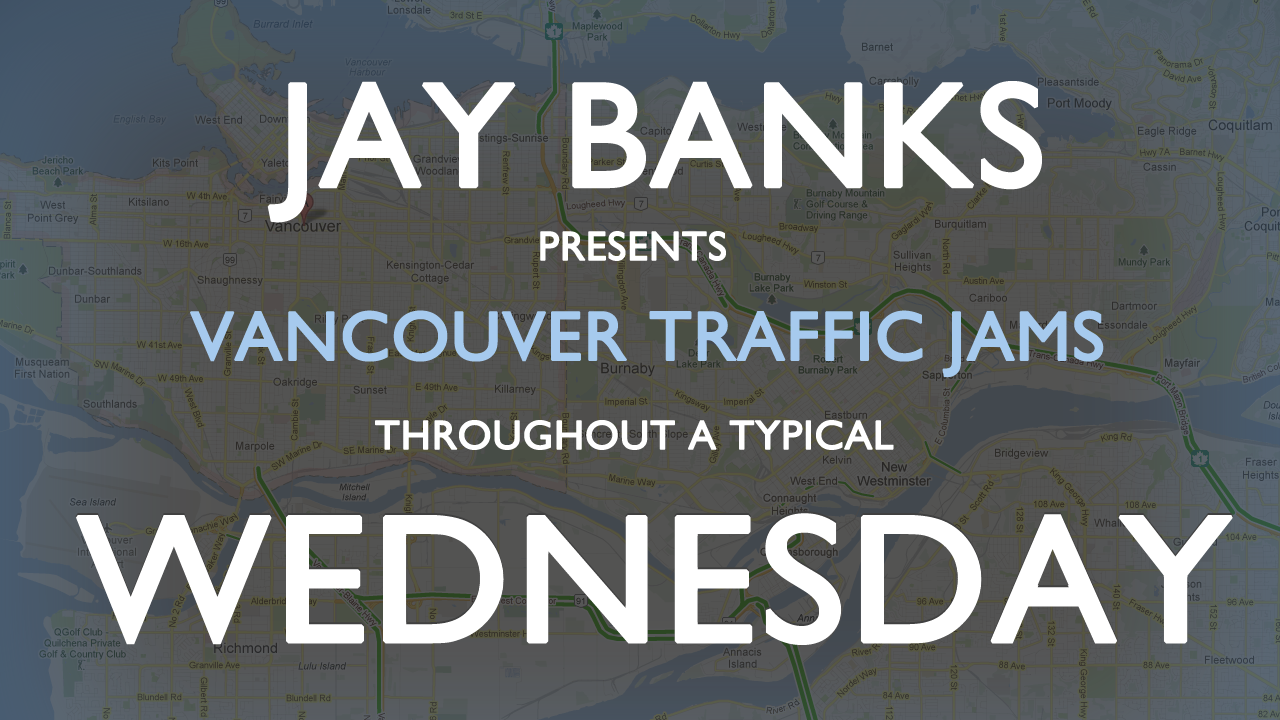Location is an important factor to consider when buying a home in Vancouver, especially when it comes to your commute. This is, after all, a city that is regularly named the most congested city in Canada. This designation is mostly due to the heavy commuter flow across the limited number of bridge crossings entering the city’s downtown core – a factor that is exacerbated by the seemingly constant interruption of new construction projects that block roads and cause further delays.
The good news, however, is that congestion rates in Vancouver are dropping, although not enough for the city to lose its "most congested city" status. GPS manufacturer TomTom, which publishes the annual congestion ratings, found that commuters spent less time sitting in traffic in Vancouver in 2015 as compared to 2016, but they still faced more traffic jams than commuters in other cities like Toronto and Montreal. The other piece of good news is that while traffic in Vancouver can be a real problem for its residents, there are also ways to avoid it. Here are a few tips to help make your commute shorter and less frustrating.
Be Informed!
Besides being aware of the TomTom data, you might also use some other methods for learning about the traffic situation. Traffic apps like Google Maps or Waze will provide you with real-time traffic information on your smartphone, or you can opt for the old-school approach by tuning in to one of the Vancouver radio stations that gives regular updates on the traffic situation.
Forget about Shortcuts
According to a TomTom survey, the average congestion level on highways is only 17 per cent as compared to non-highways, where average congestion reaches 34 per cent. TomTom data also shows that choosing alternate routes away from the main thoroughfares actually adds 50% more travel time to commutes. Based on this data, the answer is clear: stick to the highways and avoid taking shortcuts.
Don’t Drive Downtown
If possible, avoid driving downtown. Instead, think about creating a different commuting pattern. For example, try parking your car near the edge of the city centre and using public transit once you’re close enough to your destination. You might be surprised how much time you can save by thinking outside the box.
Modify Your Work Schedule
Most of us have a flexible work schedule; we’re just not using it as much as we should. If you don’t mind getting up early, why not drive to the city one hour before the roads gets congested? This would also allow you to leave your workplace one hour before the evening peak time. Or you might enjoy a small sleep in, reach the office later, and stay a bit longer — maybe going straight to your evening program from work isn’t such a bad idea!
Avoid Busy Bridges
Vancouver bridges are notorious for their congestion, with hundreds of thousands of commuters crossing the city’s rivers and inlets to get to work every day. According to Google Maps, the busiest bridge appears to be the Alex Fraser, where delays can reach up to 30 minutes during peak times, and have been known to exceed three hours if there’s a traffic incident. So if it’s at all possible, avoid bridges on your commute, or try to use a route that involves a less congested crossing (Google Maps can give you some good information in this respect).
Be Aware of the Most Congested Days
Traffic in Vancouver tends to be the worst during the mid-week days from Tuesday to Thursday. Morning rush hour typically delays traffic by around 53 per cent on these days, while the evening rush hour reaches its peak on Thursday evenings between 5 and 6 PM where congestion rates reach 73 per cent. If you plan on rearranging your work schedule or using public transportation on certain days of the week, these mid-week days are the ones to be most wary of. For more on the busiest days of the week, check out our videos on Vancouver’s daily traffic flow.
Least Congested Days
By TomTom and Google Alike:
Monday, Friday
Monday

It’s quite interesting to note that in most cities included in TomTom’s stats, Monday is cited as one of the calmest days of the week. TomTom data show that the congestion level (increase in overall travel times compared to a free-flow situation; e.g. Congestion level of 15 per cent means that drivers have to withstand 15 per cent longer travel time compared to calm situations) on Monday morning amounts to 44 per cent, and evening rush hour slows Vancouverites down by 55 per cent. Even though that might seem to be a lot, it’s still by far the best result of all the weekdays. Let’s look at a typical Monday according to Google stats.
As soon as at 7:00 A.M., traffic starts to wake up. As many people who commute from longer distances begin their daily journey quite early to avoid traffic jams later in the day, some of the roads leading to Vancouver often get busy. An example of that could be the Trans-Canadian Highway around the Port-Mann Bridge, King George Boulevard just before Patullo Bridge, and the highway from North Vancouver. While the highway from North Vancouver recovers quickly and there are no jams to be seen as soon as 8:00 A.M., the bridges in the south face serious congestion that only recedes around 9:00 A.M.
 Trafic Jam In Vancouver By Allen McGregor
Trafic Jam In Vancouver By Allen McGregor
Meanwhile, traffic in the city of Vancouver itself seems to reach its rush hour between 8:00 and 9:00 A.M., as people often have to get to their workplace around this time. Some of the streets with high risks of congestion are for example Main Street around Vancouver Pacific Central, Kingsway in Mount Pleasant areas, Seymour Street, and Granville Street. The last shout comes shortly after 9:00 A.M. on West Georgia Street downtown, as cars from different directions meet up in the city centre. From then on, traffic is lighter until about 3:00 P.M., when the first people start moving home, and West Georgia Street is the first place where you can feel it. At about 5:00 P.M., you can feel the rush on the completely jammed Cambie Street, West and East Broadway, and Main Street, which generally remains busy for most of the day. Between 6:00 and 7:00, Howe Street and Burrard Street downtown tend to become congested as well, but from then on you shouldn’t encounter any significant slowdowns anywhere in the city –—after all, Monday is one of the “good days” in the traffic calendar.
Tuesday

TomTom reports Tuesday to be the day with one of the worst peak periods of the week. According to their data, the morning rush hour slows us down by 55 per cent and in the evening we spend more than 66 per cent extra time waiting in traffic jams.
Looking at the data from Google, the first striking thing is that the 7:00 A.M. jams on the roads leading to Vancouver are not present on Tuesday, which could be explained by some people coming to the city for the workweek on Monday morning and staying until Friday. However, as TomTom hinted, traffic in the City of Vancouver is denser from the morning. As soon as around 7:45 A.M., Main Street gets congested between Mt. Pleasant and Downtown Eastside, while many other roads in downtown areas show signs of busier traffic. Just like Monday, the true morning rush hour comes between 8:00 and 9:00 A.M. The heaviest traffic jams occur along Highway 7a downtown, at the intersection of Clark Drive and East Broadway, or at East 12th Avenue, which seems to be completely jammed. Of course, there are also the traditionally busy streets, like Dunsmuir Street, Main Street, and Cambie Street, where traffic never seems to calm down. Interestingly enough, West Georgia Street and Howe Street experience heavy traffic just before noon, when the traffic should be generally calmer.
Already at about 2:00 P.M., the afternoon traffic jams start to occur. The downtown areas are often completely jammed at many places and Cambie Street, West Broadway, and Main Street are quick to get filled by cars as well. It should also be mentioned that from 5:00 P.M. on, all the main roads from Vancouver, Burnaby, and other municipalities to the south are completely jammed every day. The traffic only gets better around 7:00 P.M., after most commuters more or less successfully leave the city.
Wednesday

Another day to be aware of in terms of traffic is Wednesday. TomTom peak hour stats exactly copy the Tuesday findings. However, according to Google, the development of congestion seems to be slightly different. While most of the trouble areas remain the same, the differences should be taken into consideration when planning your Wednesday journey. For example, West 16th Avenue gets jammed as soon as 7:15 A.M., while Main Street seems to be okay for most of the time, even during rush hour. As for downtown, Dunsmuir Street experiences the heaviest congestion. Shortly after 9:00 A.M., when the peak is almost over, avoid Clark Drive, which tends to be jammed, to save time. Compared to Tuesday, downtown areas seem to be calmer before noon and except for a couple of problematic areas (beware of Nelson Street!), you shouldn’t experience major delays here. However, streets get just as filled as they do on Tuesday, as people start rushing to have lunch downtown.
Main Street and Highway 7A become congested quite early on and are hardly passable as soon as at 2:30 P.M. The true downtown disaster comes at around 4:00 P.M., as West Georgia Street and Burrard Street are completely jammed for quite some time and significantly slow down movement within the city centre. Generally speaking, traffic in the city becomes very slow between 4:00 and 6:30 P.M., as people leave their workplaces and the roads can become congested at very many places. Some typical examples are Main Street, Pacific Boulevard, Water Street, and many others. And one fun fact in the end: TomTom proclaimed the 18th of January (Wednesday) to be the most congested day of the year.
Friday

According to TomTom, Friday should be a calm day when it comes to Vancouver traffic. Looking at the Google traffic density maps and experiencing the city traffic for years, we can only agree that the TomTom figures are right. On Friday, there are no major traffic jams in the early morning and even during rush hour between 8:00 and 9:00, traffic starts to pile up very slowly. Of course, West Georgia Street in downtown becomes congested even on Friday and everybody should be aware of the busy traffic on Main Street and Granville Street, but the overall density is significantly lower.
It’s also interesting to watch how people apparently call it a day much earlier on Friday, since the downtown congestion comes right after lunch and slowly spreads to less central areas as people seek their prolonged weekend rest. At that time, downtown is overwhelmed with traffic and Cambie Street and Main Street don’t provide a relaxing getaway either, but if you’re patient enough to wait a bit longer at work, you will have a very convenient journey home: there is virtually no evening rush hour, as everybody leaves the city right after noon.
Enjoy Your Commute
After reading this article, you might just think that we are simply stating the obvious without realizing that ordinary Vancouverites simply cannot eliminate traffic jams from their everyday lives. Fair enough, but in this case, try your best to enjoy the time spent waiting in the car. Get audio books, learn new languages, talk to your kids about their day, or just use the spare moments to reflect on your life. Take it as extra time to treat yourself and relax (however difficult it might be).





what happens with traffic on Thursdays?
Christa
Good morning Jay. I want to thank you for this informative and useful report. I don’t suppose that traffic patterns have changed too much since the writing of this report however as I may become a home buyer in the next two years or so I was wondering if there is possibly a more detailed and updated report forthcoming in the near future? I don’t suppose too much has changed however with the major upgrades to Highway #1, the new Port Mann bridge and so on there may be some changes. I work right downtown near the intersection of Burrard and Georgia and I rent in Kitsilano at the moment but I’d like to start planning where I might buy a condo. With factors not the least of which are my budget constraint it would be interesting to compare route density. It is interesting that you referred to Google Maps traffic density information and I’m going to look that information up. Also, your tip on audiobooks is excellent and I do that anyways – very enjoyable. Again, thank you for the traffic tips and you’re on my radar as a go-to realtor in my future. Cheers.
Thanks for this. I am switching from nights to a morning shift starting next month after nearly 7 years of working strictly nights. I was a little worried about rush hour but it looks like I will be starting early enough to miss the morning rush hour. Hopefully I will be happy enough to be out of the office that the evening rush hour won’t drive me crazy.
Having lived in Vancouver for over 10 years I know how bad the traffic can be. This will definitely be a great help to many residents still battling traffic every day. Thanks for sharing!